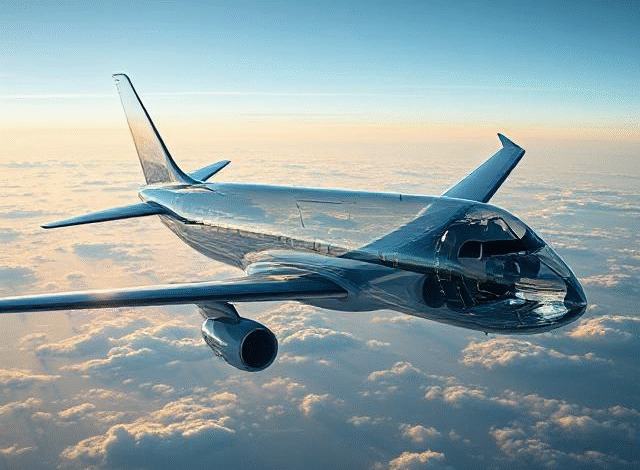Flying Without Windows: The Dazzling Future of Windowless Airplanes

Flying Without Windows: The Dazzling Future of Windowless Airplanes
Imagine stepping into an airplane cabin where there are no windows—only sleek walls that stretch seamlessly from floor to ceiling. At first, it may sound claustrophobic, even unsettling. But within seconds, the walls flicker to life, transforming into panoramic, ultra-high-definition displays. Suddenly, the cabin is bathed in sweeping views of the sky, the horizon, even the stars above. Passengers can choose between real-time footage captured by external cameras, or switch to soothing digital sceneries of coral reefs, cosmic galaxies, or even a personalized entertainment interface.
This is not science fiction. It is the revolutionary vision of windowless airplanes, a concept first championed by the UK’s Centre for Process Innovation (CPI) and explored by several aviation design think tanks worldwide. With advances in display technology, structural engineering, and lightweight materials, the dream of airplanes without physical windows is inching closer to reality.

Why Remove Windows?
For decades, windows have been both a marvel and a challenge for aviation engineers. While they give passengers the joy of looking outside, windows also make fuselages weaker and heavier. Each cut-out disrupts the structural integrity of the aircraft, demanding reinforcements that add significant weight.
By eliminating windows, manufacturers can design fuselages that are lighter, stronger, and more aerodynamic. A lighter aircraft burns less fuel, which means lower emissions and reduced operating costs. According to CPI’s early estimates, weight reduction could cut fuel consumption by up to 15–20%, a massive leap for an industry under constant pressure to go greener.
And then comes the bonus: replacing windows with flexible OLED and LED panels means passengers could still enjoy views—only enhanced and customizable.
The Passenger Experience of Tomorrow
Picture this: as you take your seat in a windowless jet, the walls around you light up with a crystal-clear projection of the outside world, captured in real time by high-definition cameras mounted on the aircraft’s skin. You can “turn on” your view, switch angles, or even toggle to a 360-degree panorama.
Not in the mood to look at the clouds? With a simple touch, you could replace the view with a Hollywood blockbuster, a serene mountain landscape, or a personalized digital workspace. Instead of standard in-flight entertainment screens, the entire wall becomes your screen.
Design think tanks propose even more ambitious features:
- Interactive information overlays showing flight paths, altitude, or real-time weather.
- Ambient lighting synced to the scenery, creating a calming environment that reduces jet lag.
- Virtual reality zones, where passengers can “open” a digital window into entirely different worlds.
For business travelers, the cabin could transform into a private office suite. For families, it could become a mini-theater. The cabin environment would no longer be fixed—it would adapt to the passenger.
Safety, Comfort, and Design
One concern travelers might raise is psychological: will sitting in a sealed tube without windows feel oppressive? Designers argue the opposite. Because the interior walls can be customized, cabins may actually feel more spacious and open. Instead of small, framed windows that let in uneven light, an entire side of the aircraft can glow with daylight simulation or starry skies.
From a safety perspective, windowless planes could prove even better. Cameras can provide pilots with broader, sharper, and infrared-enhanced views than human eyes can manage through cockpit windows. Meanwhile, passengers get seamless, real-time feeds unaffected by glare or restricted sightlines.
And because the fuselage is stronger without window cutouts, these designs can reduce risks of cracks, leaks, or stress failures, enhancing both durability and safety.
The Roadblocks Ahead
Of course, this futuristic vision faces real hurdles.
- Technology Costs: Outfitting entire cabins with durable, high-definition flexible displays is still expensive.
- Power Demand: Running massive screens throughout long flights requires efficient energy management.
- Passenger Acceptance: Convincing people to embrace windowless flying will take time. Trust and comfort play enormous roles in aviation adoption.
- Regulations: Aviation authorities will need to carefully test and certify new materials, displays, and safety protocols.
Yet, as we’ve seen with inflight Wi-Fi, touchscreen entertainment, and noise-cancelling cabins, passengers adapt quickly when the technology enhances comfort.
What the Future Holds
Several design think tanks, beyond CPI, continue to refine prototypes of windowless cabin concepts. Airbus has hinted at futuristic “transparent fuselages,” while smaller aerospace startups experiment with lighter, screen-based interiors. If successful, the first generation of partially windowless jets could debut in business aviation or luxury charter flights within the next decade.
In time, mainstream airlines may adopt them to reduce costs and appeal to a new breed of tech-savvy travelers. Combined with sustainable aviation fuels and hybrid engines, windowless airplanes could mark a new era in cleaner, smarter, and more customizable air travel.
A Glimpse of Tomorrow’s Skies
The window has always been our emotional tether to the skies, a small frame that reassures us we are indeed flying above the world. In the near future, that tether may become far grander—an entire cabin that transforms into a sky-sized window, or perhaps into anything else we want to see.
Windowless airplanes may not only reshape the design of aircraft but also redefine how humans experience flight. What once seemed like a radical idea is now emerging as one of aviation’s most exciting revolutions.So the next time you board a plane, don’t just look for your window seat. In tomorrow’s world, every seat might just have the best view in the sky.



